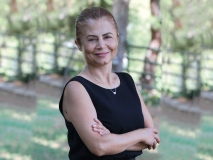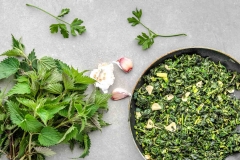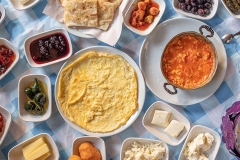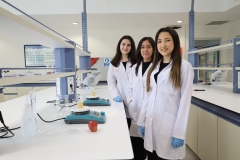
FACULTY OF ENGINEERING
Department of Food Engineering
VCD 302 | Course Introduction and Application Information
| Course Name |
Analysis of Visual Culture
|
|
Code
|
Semester
|
Theory
(hour/week) |
Application/Lab
(hour/week) |
Local Credits
|
ECTS
|
|
VCD 302
|
Fall/Spring
|
3
|
0
|
3
|
4
|
| Prerequisites |
None
|
|||||
| Course Language |
English
|
|||||
| Course Type |
Service Course
|
|||||
| Course Level |
First Cycle
|
|||||
| Mode of Delivery | - | |||||
| Teaching Methods and Techniques of the Course | - | |||||
| Course Coordinator | - | |||||
| Course Lecturer(s) | ||||||
| Assistant(s) | - | |||||
| Course Objectives | The overall aims of this course are: • to analyse and interpret the increasing visualisation of contemporary culture • to develop specific visual and verbal skills for observing, analysing, describing and critiquing (audio)visual imagery from a range of diverse theoretical perspectives. • to interrogate the ways visual images contribute to the formation of identities and social environments. |
| Learning Outcomes |
The students who succeeded in this course;
|
| Course Description | This is a theoretical course that explores the meanings and effects of images, and ways of looking across a wide spectrum of visual culture: from painting and sculpture to print, packaging, photography, film, advertising, video games and fashion. It encourages students to develop a range of critical approaches to visual language and its importance both historically and contemporary. The course will thus touch upon a number of significant issues, such as globalization, postmodernism, sexuality and the construction of gender, commodification and mass consumption/production, and the production and reception of images of ethnicity and national identity. |
|
|
Core Courses | |
| Major Area Courses | ||
| Supportive Courses | ||
| Media and Management Skills Courses | ||
| Transferable Skill Courses |
WEEKLY SUBJECTS AND RELATED PREPARATION STUDIES
| Week | Subjects | Related Preparation |
| 1 | Syllabus Introduction | None |
| 2 | What is Visual Culture? Visual Methodologies (I) | Rose, G. Visual Methodologies. London: Sage, 2007 (Chapter 3: ‘the good eye‘) |
| 3 | What is Visual Culture? Visual Methodologies (I) | Rose, G. Visual Methodologies. London: Sage, 2007 (Chapter 4: ‘Content analysis’) |
| 4 | What is a Sign? Visual Methodologies (II) | Williamson, J. De-coding Advertise-ments: Ideology and Meaning in Advertising. Lon-don: Boyars, 1978, pp. 1114, 1727, 99105. Rose, G. Visual Methodologies. London: Sage, 2007 (Chapter 5, ‘Semiology’) |
| 5 | Mythology and Second-order semiological system. | Rose, G. Visual Methodologies. London: Sage, 2007 (Chapter 5, ‘Semiology’) |
| 6 | Visual Methodologies (III) | Psychoanalysis’ in Rose G. Visual Methodologies. London: Sage, 2007 |
| 7 | Visualising Gender: Constructions of Femininity and Masculinity | ’Psychoanalysis’ in Rose G. Visual Methodologies. London: Sage, 2007, |
| 8 | Critique, discussion,writing the in-class essay | None |
| 9 | Postmodernism: Pastiche and Parody | Postmodernism and Popular Culture’. Practices of Looking. M. Sturken, et. al, Oxford: OUP |
| 10 | In-class presentations by students | None |
| 11 | Introduction to Discourse Analysis | Discourse Analysis I in Rose G. Visual Methodologies. London: Sage, 2007 |
| 12 | Visual Power: The Panopticon | ‘Over and Under Surveillance’ online article by Judy Chen |
| 13 | Introduction to Contemporary Art Theory | The Conspiracy of Art: Manifestos, Interviews,Essays’ by Jean Baudrillard, NY,2005 |
| 14 | Fashion and Identity | Barthes, R. The Fashion System. Berkeley and Los Angeles, California: University of California Press, 1990 |
| 15 | Review of the Semester | |
| 16 | Review of the Semester |
| Course Notes/Textbooks | Gillian Rose ''Visual Methodologies'' ISBN: 978-1-4739-4890-7 |
| Suggested Readings/Materials |
EVALUATION SYSTEM
| Semester Activities | Number | Weigthing |
| Participation | ||
| Laboratory / Application | ||
| Field Work | ||
| Quizzes / Studio Critiques |
1
|
20
|
| Portfolio | ||
| Homework / Assignments |
1
|
40
|
| Presentation / Jury | ||
| Project |
1
|
40
|
| Seminar / Workshop | ||
| Oral Exams | ||
| Midterm | ||
| Final Exam | ||
| Total |
| Weighting of Semester Activities on the Final Grade |
2
|
60
|
| Weighting of End-of-Semester Activities on the Final Grade |
1
|
40
|
| Total |
ECTS / WORKLOAD TABLE
| Semester Activities | Number | Duration (Hours) | Workload |
|---|---|---|---|
| Theoretical Course Hours (Including exam week: 16 x total hours) |
16
|
3
|
48
|
| Laboratory / Application Hours (Including exam week: '.16.' x total hours) |
16
|
0
|
|
| Study Hours Out of Class |
0
|
||
| Field Work |
0
|
||
| Quizzes / Studio Critiques |
1
|
12
|
12
|
| Portfolio |
0
|
||
| Homework / Assignments |
1
|
24
|
24
|
| Presentation / Jury |
0
|
||
| Project |
1
|
36
|
36
|
| Seminar / Workshop |
0
|
||
| Oral Exam |
0
|
||
| Midterms |
0
|
||
| Final Exam |
0
|
||
| Total |
120
|
COURSE LEARNING OUTCOMES AND PROGRAM QUALIFICATIONS RELATIONSHIP
|
#
|
Program Competencies/Outcomes |
* Contribution Level
|
||||
|
1
|
2
|
3
|
4
|
5
|
||
| 1 | Being able to transfer knowledge and skills acquired in mathematics and science into engineering, | |||||
| 2 | Being able to identify and solve problem areas related to Food Engineering, | |||||
| 3 | Being able to design projects and production systems related to Food Engineering, gather data, analyze them and utilize their outcomes in practice, | |||||
| 4 | Having the necessary skills to develop and use novel technologies and equipment in the field of food engineering, |
|||||
| 5 | Being able to take part actively in team work, express his/her ideas freely, make efficient decisions as well as working individually, |
|||||
| 6 | Being able to follow universal developments and innovations, improve himself/herself continuously and have an awareness to enhance the quality, |
|||||
| 7 | Having professional and ethical awareness, |
|||||
| 8 | Being aware of universal issues such as environment, health, occupational safety in solving problems related to Food Engineering, | |||||
| 9 | Being able to apply entrepreneurship, innovativeness and sustainability in the profession, |
|||||
| 10 | Being able to use software programs in Food Engineering and have the necessary knowledge and skills to use information and communication technologies that may be encountered in practice (European Computer Driving License, Advanced Level), |
|||||
| 11 | Being able to gather information about food engineering and communicate with colleagues using a foreign language ("European Language Portfolio Global Scale", Level B1) |
|||||
| 12 | Being able to speak a second foreign language at intermediate level. |
|||||
| 13 | Being able to relate the knowledge accumulated during the history of humanity to the field of expertise |
|||||
*1 Lowest, 2 Low, 3 Average, 4 High, 5 Highest
NEWS |ALL NEWS

Online 'weight loss' period
The increase in time spent at home to protect against coronavirus and the habit of sedentary life caused a "weight" crisis for

The Aegean is distributing healing
The fear of catching coronavirus, which is transmitted to more than 73 million people worldwide, and the increase in flu cases with

Pandemic changed eating habits
The coronavirus, which negatively affected life in many issues from daily life to work and social interaction, also changed the eating habits

HIGH-SCHOOL STUDENTS EXPERIENCED COLLEGE IN FOOD ENGINEERING LABORATORIES
“SCIENCE DAYS” event was organized by Department of Food Engineering in Izmir University of Economics. This event aimed to teach science in

STUDENTS OF FOOD ENGINEERING DEPARTMENT DEVELOPED 'ATRICHOKE PASTE' FOR FIRST INTERNATIONAL URLA ARTICHOKE FESTIVAL
Most of the attenders enjoyed the 'Artichoke Paste', developed by the students of Food Engineering Department.

MAINTAINING HEALTHY EATING HABITS DURING HOLIDAY SEASON!
As the students got their report cards and started a long summer holiday, the experts pointed out the importance of not to


